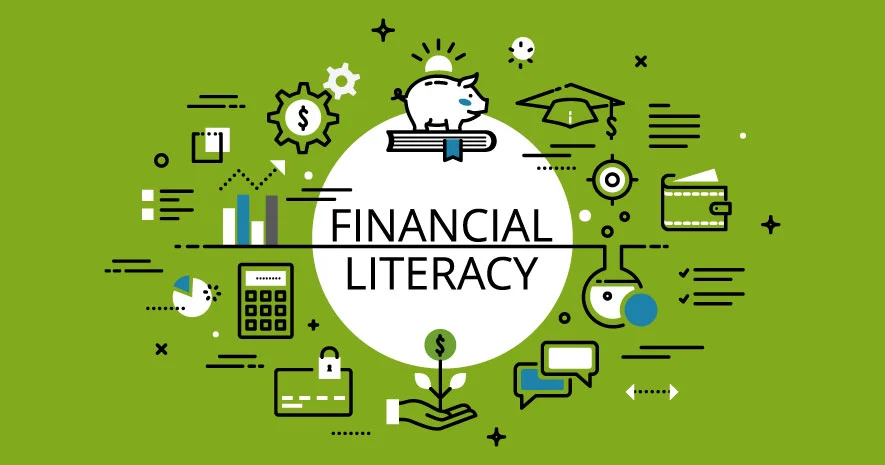
Financial education teaches the skills and attitudes necessary to understand money and finance. Developing your understanding of finance will give you the knowledge and skills you need to manage your money effectively. It helps to make informed choices and encourages financially responsible behavior.
Teaching children about finance at a young age aims to deepen their knowledge about money in the real world.
This develops their ability to manage money as they mature and gives them the knowledge and confidence to make important financial decisions.
Financial Education in Schools Education is an important part of the curriculum. This not only prepares children for life in general, but also helps them improve their financial literacy. Financial literacy helps children better understand how to organize their finances and helps them build confidence in managing money as adults.
Financial education also contributes to the development of financial well-being. We all know that money can't buy happiness, but mismanaging it can definitely take a toll on your mental health. Teaching children about finance from a young age can help them to lessen their financial worries and better cope with financial challenges as adults. Having these foundational knowledge before graduation is a great advantage for young people to help them make smart financial decisions as they grow up.
In financial education classes, students learn a variety of skills to better prepare to manage money and make important financial decisions. Topics covered in financial education include banking, debt, money, budgeting, saving, and investing in your future. Children also learn about the consequences of taking financial risks and how to avoid them. They learn about value for money through the prices we pay and the products we get. Financial education also explores ethical spending by helping students understand the production methods used in various products and how to make ethical purchasing decisions.
Another important component of financial education is helping young people distinguish between wants and needs. It is an important part of budgeting and develops in students the ability to plan what we must spend. By thinking about how we can spend our money, children will also learn what happens when people cannot afford to buy what they need, why people may borrow money, and the possible consequences of doing so . It also teaches how income and expenses can contribute to society through paying taxes.
If you've been reading the news about education or finance lately, you've likely come across the term "financial literacy." The goal of financial literacy training is to help people better understand basic financial concepts so they can better manage their money.
This is a worthy goal. This is especially true when you consider statistics on how the average American manages their money. More than a quarter don't save money every month.
Nearly 75% are in some form of debt, and most believe they always will. Oh! Given these numbers, it's no surprise that leaders in business, education, and government want to help spread the benefits of increased financial literacy to as many people as possible.
In fact, in 2004, the Senate “passed a resolution officially recognizing April as Financial Literacy Month to raise public awareness of the importance and importance of financial education in the United States. It was important. It has to do with misconceptions about personal finance.”
Financial Literacy consists of several financial components and skills that enable you to acquire knowledge about effective money and debt management.
The following are the main components of financial literacy that you need to master.
In budgeting, the four main uses of money that determine your budget are spending, investing, saving and giving.
Creating the right balance between the primary uses of money allows people to better distribute their income, leading to financial security and prosperity.
In general, your budget should be designed in such a way as to pay off all existing debt and leave money for savings and profitable investments.
To become financially savvy, you need to learn about the basic aspects of investing. Some of the components you need to look into to ensure a profitable investment are interest rates, price levels, diversification, risk reduction and indices.
By learning about the important components of investing, you can make smarter financial decisions that can lead to more income streams.
In most cases, almost everyone will have to borrow money at some point in their life. For effective borrowing, it is important to understand interest rates, compound interest, time value of money, payment terms and loan structure.
Through sufficient understanding of the above criteria, individuals can enhance their financial literacy, provide practical advice on loans, and reduce long-term financial stress.
Learning about the different forms of taxation and how they affect a person's net income is critical to gaining financial literacy. Each source of income, whether employed, invested, rented, inherited or contingent, is taxed differently. Knowing different income tax rates ensures economic stability and improves financial performance through revenue management.
The most important criteria for personal financial management include all of the components listed above.
Financial security is provided through a balanced combination of the above financial components, which strengthens and increases investment and savings while reducing borrowing and debt.
Gaining an in-depth knowledge of the financial components discussed above ensures an individual's increased financial literacy.